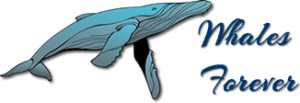Scientific Name: Balaenoptera musculus
Other Names: Great Northern Rorqual, Sulphur-bottom, Sibbald’s Rorqual
The Blue Whale is known as being the largest animal on earth, now and since creation. Some of the largest recorded Blue Whales have measured up to 33 metres (or 110 feet) in length and weighing in at an astounding 190 tonnes. These are baleen whales meaning that they feed on tiny plankton, which is quite amazing, considering their immense size.

Blue Whale.

Blue Whale.
There are three subspecies of Blue Whale. These are 1) Balaenoptera musculus intermedia in the Northern Hemisphere, 2) Balaenoptera musculus musculus in the Southern Hemisphere and 3) Balaenoptera musculus brevicauda, also known as the Pygmy Blue Whale, which will be considered separately.
Behaviour
The Blue Whale will blow every 10 to 20 seconds for between two and six minutes. Then, it will dive below the water’s surface for an average period of between five and 20 minutes, although it can stay under for longer, if and as necessary. It will dive to about 150 metres, but can manage deeper. Sometimes, upon diving, the Blue Whale will first display its mammoth fluke.
They generally feed during the early morning or evening. The adults do not generally breach completely, although they may breach to a certain extent.
Where to Find Them
The Blue Whale is distributed in patches all over the world, but sticks mainly to the cold oceans and open seas. Most of these whales live in the Southern Hemisphere. They might migrate over long distances between wintering and summering grounds. They are most often found along the edge of the continental shelf and near polar ice.
Diet
Blue Whales live on krill or plankton, which is a tiny crustacean that gets stuck in the baleen plates in its mouth as its sucks in huge mouthfuls of water and the life it sustains.
Threats
Because the Blue Whale is so large and widely dispersed, it does not face any significant known threats. Of course, human interference (such as pollution and the destruction of its natural habitat) will have negative, sometimes endangering, consequences on this stunning species.

